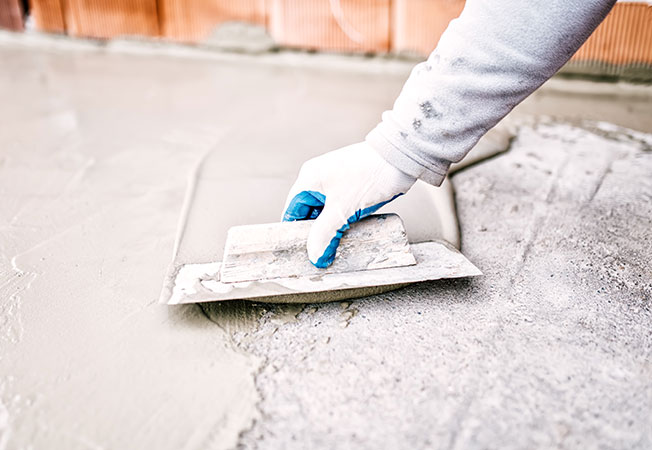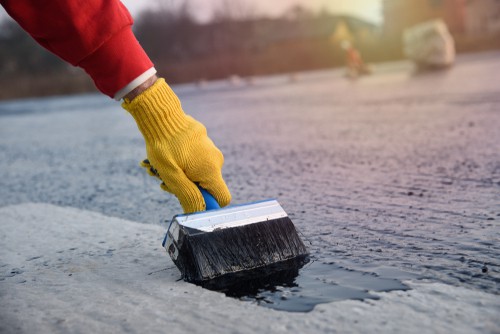How Waterproofing Works: A Comprehensive Check Out Techniques and Technologies
Waterproofing is necessary for safeguarding structures from moisture-related damage. It entails different techniques and modern technologies that create barriers versus water breach. Standard methods, such as compressed clay, exist side-by-side with modern-day technologies like liquid-applied membranes. Comprehending the nuances of these methods is crucial for reliable application. The performance of any type of waterproofing remedy hinges not just on the methods used but likewise on ongoing upkeep and evaluation. What are the vital variables that affect long-term efficiency?
Recognizing the Basics of Waterproofing
Waterproofing is a necessary process that protects frameworks from water breach, which can lead to considerable damage gradually. This method entails the application of different materials and techniques designed to create an obstacle against wetness. The primary goal is to avoid water from permeating surface areas, which can trigger degeneration, mold and mildew growth, and architectural instability.Various aspects influence the choice of waterproofing method, consisting of the kind of structure, its location, and ecological conditions. Recognizing the physics of water movement and the residential properties of various materials is crucial in choosing an effective waterproofing solution.Effective waterproofing not just safeguards structures yet additionally enhances their long life and integrity. Usually, it is incorporated into the style phase of building to guarantee detailed defense. As recognition of water-related concerns grows, the relevance of understanding waterproofing principles becomes increasingly clear to architects, builders, and building owners alike.
Traditional Waterproofing Approaches
Traditional waterproofing approaches have actually been made use of for centuries, depending on reliable techniques and products to guard structures from water damages. One of the earliest approaches involves making use of clay, which, when compacted, creates an all-natural barrier against dampness. Furthermore, asphalt, a sticky, black product obtained from petroleum, has actually been utilized for its waterproof buildings, typically used to roofings and foundations.Another strategy includes the application of lime-based plasters, which supply a breathable layer that allows wetness to leave while avoiding water access. Thatch roofing, a traditional approach still seen in some cultures, uses excellent waterproofing as a result of its snugly packed straw layers.Moreover, using rock and brick has projected, as these products are inherently resistant to water when effectively mounted. In general, traditional waterproofing methods highlight the relevance of choosing ideal products and building methods to improve durability versus water breach.
Modern Waterproofing Technologies
Advancements in contemporary waterproofing innovations have revolutionized the method frameworks are safeguarded from water damages. Cutting-edge strategies such as liquid-applied membranes and sophisticated sealants have improved the performance and flexibility of waterproofing options. These technologies permit seamless application, minimizing the threat of leaks and making certain comprehensive insurance coverage over intricate surfaces.Moreover, the integration of clever innovations, such as moisture sensors and automated monitoring systems, allows real-time evaluation of waterproofing efficiency. This positive strategy helps with prompt upkeep and minimizes long-term fixing costs.Additionally, improvements in spray-applied layers provide fast application and excellent adhesion, adjusting to numerous substrates while giving robust security. Methods like polymer-modified systems even more improve flexibility and durability, making them ideal for diverse atmospheres. Generally, contemporary waterproofing innovations not just reduce water intrusion however also add to the durability and sustainability of structures, noting a considerable change in the market.
Products Made Use Of in Waterproofing
The effectiveness of waterproofing solutions greatly relies on the products used in their application. Various materials are utilized to develop barriers against water access, each with unique properties fit for different environments. Typically utilized materials consist of membranes, layers, and sealants.Liquid-applied membranes, typically made from polyurethane or acrylic, develop a seamless obstacle that adjusts to intricate surface areas. Sheet membrane layers, normally built from rubber or polycarbonate, offer toughness and are optimal for bigger areas. Additionally, cementitious waterproofing materials, Read Full Article composed of cementitious compounds, offer superb attachment and flexibility.Sealants made from silicone or polyurethane are necessary for joints and joints, making certain comprehensive security. Innovative materials, such as geo-composite membranes, incorporate multiple functions, enhancing performance. Generally, the selection of waterproofing products is essential in accomplishing durable and effective water resistance, customized to particular job needs and ecological conditions.
Common Applications of Waterproofing
Waterproofing plays a vital function in different fields, making sure the durability and integrity of structures. Typical applications consist of property options that shield homes, business facilities that safeguards organizations, and industrial settings that call for robust defense against wetness. Recognizing these applications highlights the relevance of waterproofing in preserving both safety and security and functionality throughout different settings.
Residential Waterproofing Solutions
Several home owners face obstacles with dampness breach, making efficient residential waterproofing services essential. Numerous techniques exist to address this issue, investigate this site including inside and exterior waterproofing systems. Inside remedies usually entail the application of sealers and coatings to basement wall surfaces, which help avoid water infiltration. Outside methods normally include the installment of drain systems and water resistant membrane layers that draw away water far from the foundation.Additionally, property owners may think about sump pumps to eliminate water accumulation and dehumidifiers to control moisture levels. Appropriate grading and the use of seamless gutters likewise play a vital function in handling water circulation around the home. By applying these techniques, property owners can significantly lower the threat of water damages and mold and mildew development, ensuring a dry and safe living environment.

Industrial Infrastructure Defense
Efficient waterproofing services play a vital function in the protection of business facilities. Water Solutions. These strategies are crucial for securing buildings, car park frameworks, and bridges from water damage, which can endanger architectural stability and result in costly repairs. Usual applications include the installment of membranes, coverings, and sealers that develop obstacles versus dampness infiltration. Areas such as cellars, roofing systems, and outside walls are commonly focused on to assure long life and durability. Furthermore, waterproofing systems can improve power performance by stopping water-related concerns that might result in mold growth and wear and tear. By executing robust waterproofing steps, property proprietors can protect their financial investments and preserve functional effectiveness, inevitably contributing to the total sustainability of commercial facilities
Industrial Applications Overview
While various fields deal with special obstacles, the demand for trusted waterproofing solutions remains a continuous in commercial applications. Industries such as manufacturing, construction, and power commonly come across settings where moisture exposure can threaten architectural honesty and operational effectiveness. In producing facilities, waterproofing is critical for shielding machinery and products from water damage. In construction, it safeguards foundations and basements against groundwater infiltration. The power field relies upon waterproofing for the defense of devices in hydroelectric plants and overseas frameworks. Additionally, food handling industries make use of waterproofing to assure hygiene and conformity with security standards. Overall, reliable waterproofing options are vital for boosting sturdiness, safety and security, and efficiency across numerous industrial settings.
Maintenance and Durability of Waterproofing Solutions
Although waterproofing solutions are created to offer lasting security against wetness breach, normal maintenance this website is important to assure their performance and long life - French drain installation Omaha. Regular inspections play a considerable role in identifying potential concerns such as fractures, peeling off, or signs of water damages. Addressing these troubles immediately can protect against further deterioration and costly repairs.Additionally, cleaning up the surface of waterproofed areas aids eliminate dust and debris that might jeopardize the integrity of the waterproofing obstacle. It's likewise suggested to reapply safety finishes or sealers as recommended by manufacturers to preserve optimal efficiency. Environmental elements, such as UV exposure and extreme weather, can affect the life expectancy of waterproofing materials, making routine assessment crucial
Regularly Asked Concerns
Can Waterproofing Be Applied in Winter?
The inquiry of applying waterproofing in cool weather increases problems about attachment and treating. Several products might not perform at their ideal in low temperature levels, demanding careful choice and factor to consider of specific guidelines for reliable application.
Just How Long Does Waterproofing Normally Last?
The period of waterproofing efficiency varies based upon products and environmental variables. Normally, it can last from five to ten years, but routine upkeep and examinations are vital to guarantee peak efficiency and durability.
Is DIY Waterproofing Effective and Safe?
The efficiency and safety and security of DIY waterproofing depend upon numerous aspects, consisting of material quality and application technique. While some people attain satisfying outcomes, others might experience issues that compromise lasting defense and architectural honesty.
What Are the Indications of Failing Waterproofing?
Indications of stopping working waterproofing include noticeable water discolorations, peeling off paint, mold and mildew development, stuffy smells, and wetness in walls or ceilings - Yard drainage Omaha. These indicators suggest jeopardized obstacles, demanding timely inspection and prospective removal to avoid more damage
Exactly how Do I Pick the Right Waterproofing Service Provider?
